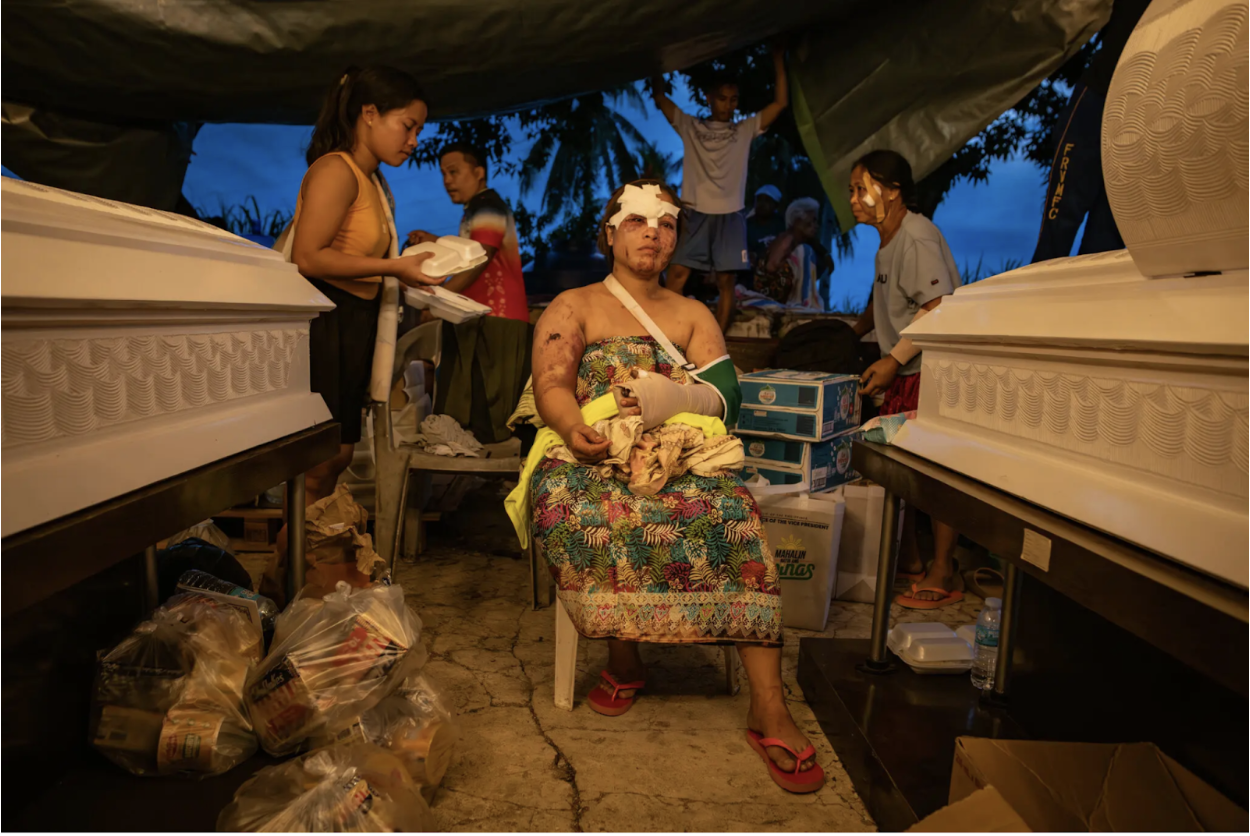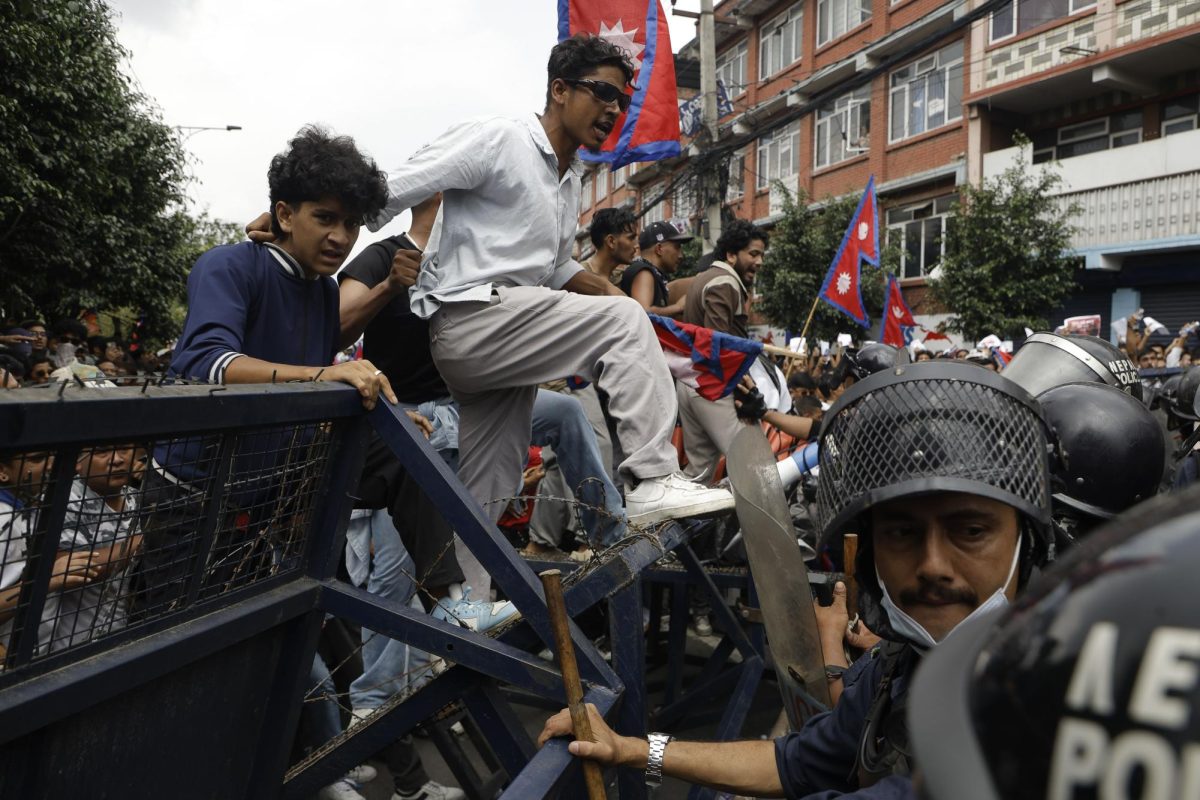The smell of collapsed rubble stuck in people’s noses. The sound of ambulances rang in their ears. People screamed. On September 30th, seventeen-year-old Lady Jane Y-Tang was home with her family in Bogo City, Cebu, when the ground began to shake. Her parents say that within seconds, the walls trembled and the lights flickered. As a landslide struck their home, Lady Jane shielded her infant brother in her arms. When rescuers arrived hours later, they found the child alive – his sister had covered him with her own body.
Scenes like this unfolded across the central Philippines after a 6.9-magnitude earthquake struck beneath the Visayan Sea at about 10 p.m. local time, the country’s deadliest since 2013. The trapped residents were in Bogo City, and many were affected in nearby towns in the Cebu province; half of the known deaths were reported from a coastal city located about 19 kilometers from Bogo City, where the shaking was especially intense. Landslides struck mountain villages, while coastal areas faced widespread destruction.
Many locations meant to function as safer ground after past disasters did not escape damage. The SM Care village, a relocation village for Typhoon Haiyan (Yolanda) survivors and residents from coastal danger zones, was also heavily affected, showing the cumulative risks from different hazards converging in the same communities.
For a long time, the Philippines was famed for having many earthquakes. The archipelago of more than 7,000 islands straddles the “Ring of Fire,” a region notorious for its volcanic and seismic activity, and where tectonic plates grind together. Earthquakes are almost part of life in the country; a 6.7-magnitude quake in November 2023 and a 7.0 quake earlier that July had already shaken the nation’s infrastructure. Yet, the 2025 Visayan earthquake was uniquely destructive due to its location and depth.
On October 3, the Philippine Institute of Volcanology and Seismology (PHIVOLCS) identified the event as originating from the previously unnamed Bogo Bay Fault. This underwater fault line had exhibited minimal activity for over 400 years. Experts believe the fault’s sudden reactivation caught even local geologists by surprise.
The scale of impact was expansive in both breadth and depth. According to the National Disaster Risk Reduction and Management Council (NDRRMC), approximately 455,631 people were affected by the earthquake, and 18,154 houses sustained damage, with 3,507 of them destroyed. Infrastructure damage, including numerous roads, schools, classrooms, homes, and public facilities, was estimated at $60.91 million. The quake also caused power outages in several areas, followed by the formation of over 100 sinkholes. Two or three hospitals were rendered unusable, and power and communication lines were cut across at least three municipalities. Casualty tolls were high: at least 72 people were killed and more than 294 were injured, while many others were buried under soil and boulders in landslides triggered by the quake. One of the hardest-hit areas was Binabag, a mountain village where devastation was particularly severe.
After the earthquake, rescue efforts moved quickly but were slowed by rain, unstable debris, and continuing tremors. Backhoes and sniffer dogs were used to tunnel through the collapsed buildings in Bogo City and surrounding areas, while hospitals moved patients outdoors amid fears of aftershock-related collapses. Temporary shelters were set up in schools and community centers as thousands chose to remain outside rather than return to cracked buildings.
Attention is now shifting from emergency response to risk reduction. Looking ahead, the government, engineers, and disaster management agencies are pushing for structural reforms, including the development of earthquake-resistant structures. Plans are underway to rebuild using earthquake-resistant methods, including reinforced steel, flexible foundations, and shock-absorbing materials, as well as stricter land-use policies near fault zones.
For families across the Philippines, recovering from trauma, damage, and losses from the earthquake is both physical and psychological. Thousands remained displaced in the days after the quake, while some haven’t been found. Many humanitarian organizations, including the Philippine Red Cross, have stepped in to distribute food, medicine, and hygiene kits to displaced families. Schools and community centers across Cebu province were converted into temporary shelters. International partners assisted with financial aid and technical expertise, enabling local teams to assess structural damage and develop long-term rebuilding strategies. While earthquakes are inevitable, the extent of tragedy is not, and preparation determines how much can be saved when the ground moves again.
We can help by taking initiatives to raise awareness about earthquakes and aid families affected by the disaster, such as spreading information or donating to support those in need.








